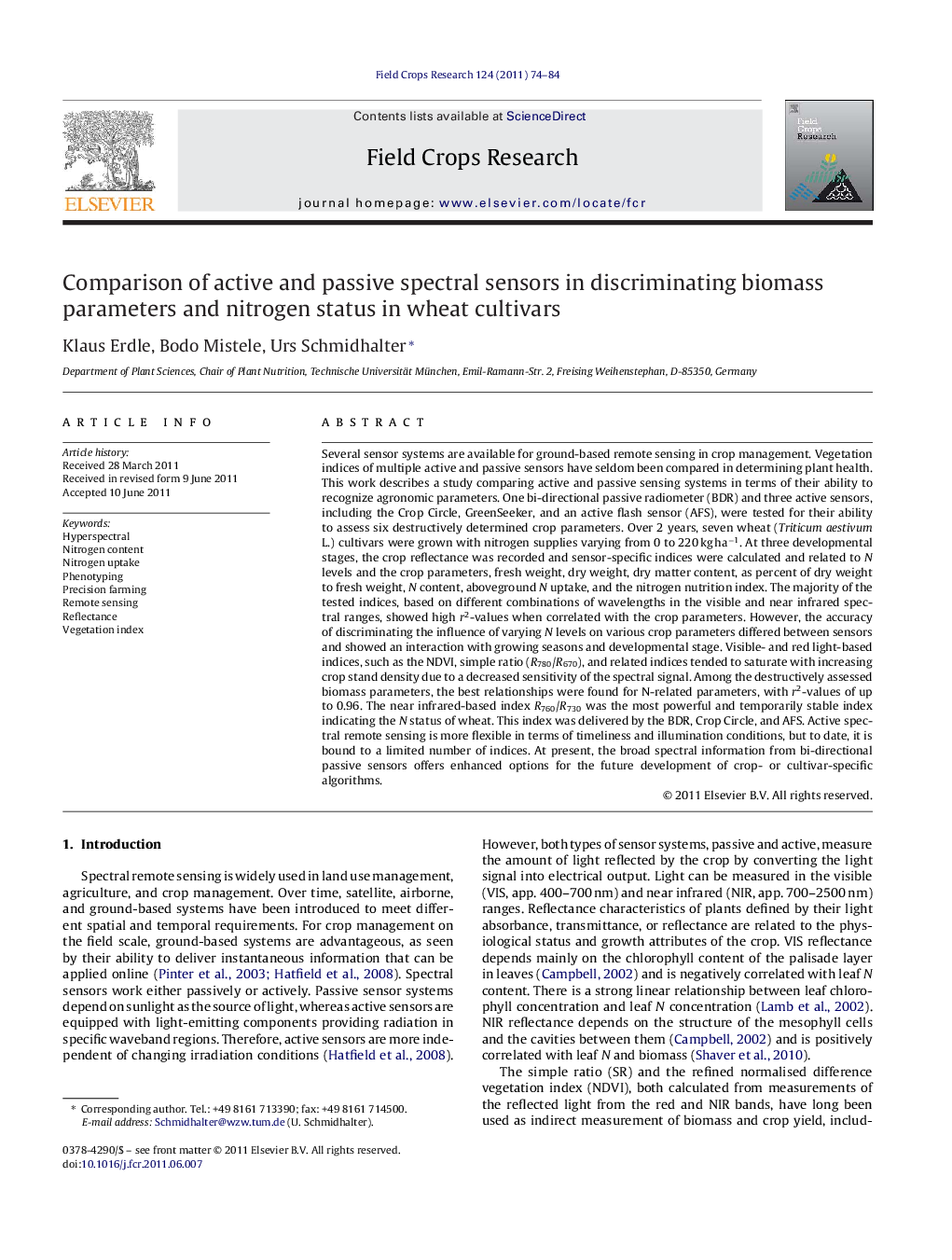| کد مقاله | کد نشریه | سال انتشار | مقاله انگلیسی | نسخه تمام متن |
|---|---|---|---|---|
| 4510638 | 1321867 | 2011 | 11 صفحه PDF | دانلود رایگان |

Several sensor systems are available for ground-based remote sensing in crop management. Vegetation indices of multiple active and passive sensors have seldom been compared in determining plant health. This work describes a study comparing active and passive sensing systems in terms of their ability to recognize agronomic parameters. One bi-directional passive radiometer (BDR) and three active sensors, including the Crop Circle, GreenSeeker, and an active flash sensor (AFS), were tested for their ability to assess six destructively determined crop parameters. Over 2 years, seven wheat (Triticum aestivum L.) cultivars were grown with nitrogen supplies varying from 0 to 220 kg ha−1. At three developmental stages, the crop reflectance was recorded and sensor-specific indices were calculated and related to N levels and the crop parameters, fresh weight, dry weight, dry matter content, as percent of dry weight to fresh weight, N content, aboveground N uptake, and the nitrogen nutrition index. The majority of the tested indices, based on different combinations of wavelengths in the visible and near infrared spectral ranges, showed high r2-values when correlated with the crop parameters. However, the accuracy of discriminating the influence of varying N levels on various crop parameters differed between sensors and showed an interaction with growing seasons and developmental stage. Visible- and red light-based indices, such as the NDVI, simple ratio (R780/R670), and related indices tended to saturate with increasing crop stand density due to a decreased sensitivity of the spectral signal. Among the destructively assessed biomass parameters, the best relationships were found for N-related parameters, with r2-values of up to 0.96. The near infrared-based index R760/R730 was the most powerful and temporarily stable index indicating the N status of wheat. This index was delivered by the BDR, Crop Circle, and AFS. Active spectral remote sensing is more flexible in terms of timeliness and illumination conditions, but to date, it is bound to a limited number of indices. At present, the broad spectral information from bi-directional passive sensors offers enhanced options for the future development of crop- or cultivar-specific algorithms.
• Evaluation of multiple sensors’ predictive performance and capability in discriminating effects of four N rates on crop health of seven wheat cultivars grown over two seasons.
• The accuracy of discriminating the influence of varying N levels on the nitrogen status and crop parameters differed between sensors and showed interactions with years and developmental stages.
• Visible and red-light based indices showed a decreased sensitivity of the spectral signals at increasing crop biomass density.
• NIR/NIR based indices of all sensors were most powerful and temporarily stable expressing the N status.
Journal: Field Crops Research - Volume 124, Issue 1, 9 October 2011, Pages 74–84